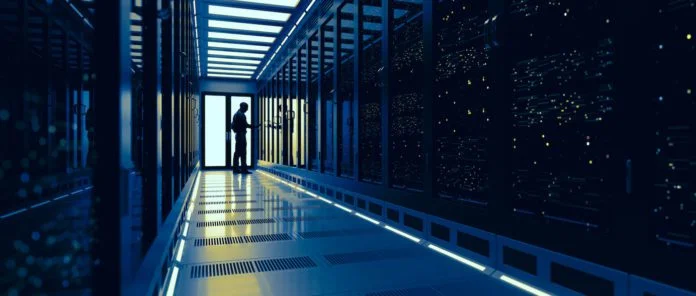Although all data centers Locations pretty much do the same job (keeping data secure and managing smooth operations), there are a lot of details that differ between these facilities. “Where they work” is one of these details that’s actually really important. The location of a data center affects its energy efficiency, cooling needs, and operational costs. Also, don’t forget that proximity to power sources, climate conditions, and network connectivity impact performance. For example, a cooler climate reduces cooling costs, while areas with high-risk natural disasters may require extra precautions for data center security and infrastructure.
Now how is this location decided? What factors are more important and which ones can be considered second priority? These are the questions we’ll be answering in this article. Read and learn the main factors of choosing a site for your data center.
Considerations to make when choosing a data center Locations
Choosing a site is among the first few (and of course, vital) decisions you’ll be making when establishing a data center. Here are 6 of the most important points to consider regarding this matter:
| Component | Role in Data Center | Connection to Other Components |
|---|---|---|
| Power Supply | Ensures continuous power to all systems in the data center (includes UPS, generators, PDUs) | Power is distributed across the data center to servers, networking equipment, cooling systems, and security systems. |
| Cooling Systems | Regulates temperature and ensures servers and equipment operate at optimal conditions | Connected to servers and networking equipment to prevent overheating, ensuring proper functioning and stability. |
| Networking and Connectivity | Manages data flow between servers and the outside world (includes fiber optics, cabling, switches) | Directly connects servers, storage, and external communication, ensuring fast and secure data transmission. |
| Physical Security Systems | Protects the data center from unauthorized access, environmental hazards (biometric access, surveillance, fire suppression) | Integrated with monitoring systems to detect unauthorized access or environmental risks, ensuring physical security of assets. |
Geographic Location and Climate
The geographical location influences everything from network latency to energy consumption. Areas with cooler climates may reduce the need for additional cooling, which can significantly lower operational costs. Additionally, selecting regions less prone to natural disasters (earthquakes, floods, hurricanes) ensures greater stability and fewer risks to the infrastructure.
Access to Reliable Power Supply
A steady and cost-effective power supply is essential for running a data center. It’s important to ensure the site is close to stable, high-quality power grids with sufficient capacity. Additionally, having access to alternative energy sources (such as renewable energy) can help improve the sustainability of the center and reduce operational costs.
Network Connectivity
Fast and reliable internet connectivity is vital for data centers. Proximity to major internet exchange points or fiber optic networks can greatly reduce latency and improve overall performance. Ensure that the chosen location offers multiple network providers to prevent dependency on a single service provider.
Related article: How Much Does it Cost to Build a Data Center? by location
Regulatory Compliance and Data Sovereignty
Data regulations vary from country to country, and ensuring compliance with local laws is essential for avoiding legal challenges. Consider data Locations sovereignty concerns: storing data in a region with stricter privacy and security regulations may be necessary for industries dealing with sensitive information.
Security and Risk Factors
Physical security is a top concern when selecting a data center site. Evaluate factors like crime rates, access control mechanisms, and emergency response plans in the area. Additionally, think about environmental impact risks such as flooding, extreme weather, and proximity to areas prone to earthquakes or wildfires.
Cost Considerations
The cost of real estate, labor, energy, and taxes in a specific region directly affects the overall operational budget of a data center. While some locations might offer attractive incentives or subsidies, it’s essential to evaluate the long-term financial impact, including potential hidden costs like maintenance and staffing.
How is infrastructure connected in a data center?
In a data center, Data Center Infrastructure Management means the essential components that support the operations, security, and connectivity of the facility. These components are intricately connected to ensure smooth, efficient, and secure operations. Here’s how:
| Component | Role in Data Center | Connection to Other Components |
|---|---|---|
| Power Supply | Ensures continuous power to all systems in the data center (includes UPS, generators, PDUs) | Power is distributed across the data center to servers, networking equipment, cooling systems, and security systems. |
| Cooling Systems | Regulates temperature and ensures servers and equipment operate at optimal conditions | Connected to servers and networking equipment to prevent overheating, ensuring proper functioning and stability. |
| Networking and Connectivity | Manages data flow between servers and the outside world (includes fiber optics, cabling, switches) | Directly connects servers, storage, and external communication, ensuring fast and secure data transmission. |
| Physical Security Systems | Protects the data center from unauthorized access, environmental hazards (biometric access, surveillance, fire suppression) | Integrated with monitoring systems to detect unauthorized access or environmental risks, ensuring physical security of assets. |
-
Power Supply
The power infrastructure is the heart of a data center. It includes uninterruptible power supplies (UPS), backup generators, and power distribution units (PDUs). These elements ensure a continuous power supply, even in case of outages, so that servers and networking equipment can run without interruption.
-
Cooling Systems
Servers generate a lot of heat, which is why cooling is a critical aspect of data center infrastructure. Cooling systems, such as CRAC (Computer Room Air Conditioning) units and air handlers, regulate temperature and maintain optimal working conditions.
-
Networking and Connectivity
Data centers rely on a robust network infrastructure to transfer data between servers and to the outside world. Fiber optics, copper cabling, and switches enable fast, secure data transmission, ensuring seamless communication both inside the facility and with clients.
Related article: Data Center Construction Process
-
Physical Security Systems
Security features like biometric access control, surveillance cameras, and fire suppression systems are crucial. These elements are connected to monitoring systems to protect against unauthorized access and environmental hazards, safeguarding the data center and its valuable contents.
Read more: How to Implement Nuclear Energy for Data Centers
Final Thoughts
To wrap it up, a data center’s infrastructure is a carefully orchestrated system where power, cooling, connectivity, and security come together to create an environment that ensures seamless operations. Each component plays a crucial role in maintaining uptime, performance, and data center security. When designing or managing a data center, it’s essential to prioritize these elements, ensuring they complement each other efficiently. By understanding these connections, businesses can better optimize their data center operations, ultimately delivering faster, more secure, and reliable services to clients while minimizing risks and costs.
FAQ
-
How does cooling affect data center performance?
Cooling systems help regulate the temperature of servers and equipment, preventing overheating and ensuring optimal performance. Proper cooling is crucial for minimizing downtime and maintaining efficient operations.
-
Why is security important in data center infrastructure?
Security protects sensitive data from threats, both physical and cyber. Data centers must have robust security measures in place, including surveillance, firewalls, and access control, to safeguard critical information.
-
What role does network connectivity play in data centers?
Network connectivity ensures seamless communication between servers, clients, and other data centers. Strong connectivity is essential for minimizing latency and providing reliable, high-speed data transmission for users.


